4-硝基-α-甲苯磺酰氯 ,(4-nitrophenyl)methanesulfonyl chloride
产品编号:SIGMA-CDS011394| CAS NO:4025-75-6| 分子式:C7H6ClNO4S| 分子量:235.6448
本网站销售的所有产品仅用于工业应用或者科学研究等非医疗目的,不可用于人类或动物的临床诊断或者治疗,非药用,非食用,
| 产品名称 | 4-硝基-α-甲苯磺酰氯 |
|---|---|
| 英文名称 | (4-nitrophenyl)methanesulfonyl chloride |
| CAS编号 | 4025-75-6 |
| 产品熔点 | 91-92°C |
| 产品沸点 | 396.4±25.0 °C at 760 mmHg |
| 产品密度 | 1.6±0.1 g/cm3 |
| 产品闪点 | 193.6±23.2 °C |
| 精确质量 | 234.970612 |
| PSA | 88.34000 |
| LogP | 1.74 |
| 蒸气压 | 0.0±0.9 mmHg at 25°C |
| 折射率 | 1.596 |
| 稳定性 | 常温常压下稳定 |
| 储存条件 | 避光,通风干燥处,密封保存 |
相关文档
化学品安全说明书(MSDS)
下载MSDS质检证书(COA)
相关产品
| 危害码 (欧洲) | C:Corrosive; |
|---|---|
| 风险声明 (欧洲) | R14;R29;R34 |
| 安全声明 (欧洲) | S22-S26-S30-S36/37/39-S45 |
| 危险品运输编码 | UN3261 |
| 包装等级 | II |
| 危险类别 | 8 |
| 海关编码 | 2904909090 |
Synonym:None Known Section 2 - COMPOSITION, INFORMATION ON INGREDIENTS
Risk Phrases: 14 34 Section 3 - HAZARDS IDENTIFICATION EMERGENCY OVERVIEW
Reacts violently with water. Causes burns.Water-reactive. Potential Health Effects Eye: Causes eye burns. Skin: Causes skin burns. Ingestion: Causes gastrointestinal tract burns. Inhalation: Causes chemical burns to the respiratory tract. Chronic: Chronic exposure may cause effects similar to those of acute exposure. Section 4 - FIRST AID MEASURES Eyes: In case of contact, immediately flush eyes with plenty of water for at least 15 minutes. Get medical aid immediately. Skin: If water-reactive products are embedded in the skin, no water should be applied. The embedded products should be covered with a light oil. In case of contact, immediately flush skin with plenty of water for at least 15 minutes while removing contaminated clothing and shoes. Get medical aid immediately. Wash clothing before reuse. Ingestion: If swallowed, do NOT induce vomiting. Get medical aid immediately. If victim is fully conscious, give a cupful of water. Never give anything by mouth to an unconscious person. Inhalation: Get medical aid immediately. Remove from exposure and move to fresh air immediately. If breathing is difficult, give oxygen. Do NOT use mouth-to-mouth resuscitation. If breathing has ceased apply artificial respiration using oxygen and a suitable mechanical device such as a bag and a mask. Notes to Physician: Section 5 - FIRE FIGHTING MEASURES General Information: As in any fire, wear a self-contained breathing apparatus in pressure-demand, MSHA/NIOSH (approved or equivalent), and full protective gear. During a fire, irritating and highly toxic gases may be generated by thermal decomposition or combustion. Water Reactive. Material will react with water and may release a flammable and/or toxic gas. Extinguishing Media: Use dry sand or earth to smother fire. DO NOT USE WATER! Do NOT get water inside containers. Contact professional fire-fighters immediately. Section 6 - ACCIDENTAL RELEASE MEASURES General Information: Use proper personal protective equipment as indicated in Section 8. Spills/Leaks: Vacuum or sweep up material and place into a suitable disposal container. Clean up spills immediately, observing precautions in the Protective Equipment section. Avoid generating dusty conditions. Provide ventilation. Do not expose spill to water. Section 7 - HANDLING and STORAGE Handling: Do not breathe dust, vapor, mist, or gas. Do not get in eyes, on skin, or on clothing. Keep container tightly closed. Do not ingest or inhale. Do not allow contact with water. Discard contaminated shoes. Keep from contact with moist air and steam. Use only with adequate ventilation. Storage: Keep container closed when not in use. Keep away from water. Store protected from moisture. Store under an inert atmosphere. Section 8 - EXPOSURE CONTROLS, PERSONAL PROTECTION Engineering Controls: Use explosion-proof ventilation equipment. Facilities storing or utilizing this material should be equipped with an eyewash facility and a safety shower. Use adequate ventilation to keep airborne concentrations low. Exposure Limits CAS# 4025-75-6: Personal Protective Equipment Eyes: Wear appropriate protective eyeglasses or chemical safety goggles as described by OSHA's eye and face protection regulations in 29 CFR 1910.133 or European Standard EN166. Skin: Wear appropriate protective gloves to prevent skin exposure. Clothing: Wear appropriate protective clothing to prevent skin exposure. Respirators: A respiratory protection program that meets OSHA's 29 CFR 1910.134 and ANSI Z88.2 requirements or European Standard EN 149 must be followed whenever workplace conditions warrant respirator use. Follow the OSHA respirator regulations found in 29 CFR 1910.134 or European Standard EN 149. Use a NIOSH/MSHA or European Standard EN 149 approved respirator if exposure limits are exceeded or if irritation or other symptoms are experienced. Section 9 - PHYSICAL AND CHEMICAL PROPERTIES Physical State: Powder Color: white Odor: slight pH: Not available. Vapor Pressure: Not available. Viscosity: Not available. Boiling Point: Not available. Freezing/Melting Point: 90-93 deg C Autoignition Temperature: Not available. Flash Point: Not available. Explosion Limits, lower: Not available. Explosion Limits, upper: Not available. Decomposition Temperature: Solubility in water: Specific Gravity/Density: Molecular Formula: C7H6ClNO4S Molecular Weight: 235.649 Section 10 - STABILITY AND REACTIVITY Chemical Stability: Combines vigorously or explosively with water. Reacts with water to form hydrogen chloride, a toxic and corrosive gas. Conditions to Avoid: Dust generation, moisture, exposure to moist air or water. Incompatibilities with Other Materials: Oxidizing agents, bases, amines, water. Hazardous Decomposition Products: Hydrogen chloride, carbon monoxide, oxides of nitrogen, oxides of sulfur, carbon dioxide. Hazardous Polymerization: Has not been reported Section 11 - TOXICOLOGICAL INFORMATION RTECS#: CAS# 4025-75-6 unlisted. LD50/LC50: Not available. Carcinogenicity: (4-Nitrophenyl)methanesulfonyl chloride - Not listed by ACGIH, IARC, or NTP. Section 12 - ECOLOGICAL INFORMATION Ecotoxicity: Fish: Pseudomonas putida: Section 13 - DISPOSAL CONSIDERATIONS Dispose of in a manner consistent with federal, state, and local regulations. Section 14 - TRANSPORT INFORMATION IATA Shipping Name: CORROSIVE SOLID, WATER-REACTIVE, N.O.S. Hazard Class: 8 UN Number: 3096 Packing Group: II IMO Shipping Name: CORROSIVE SOLID, WATER-REACTIVE, N.O.S. Hazard Class: 8 UN Number: 3096 Packing Group: II RID/ADR Shipping Name: CORROSIVE SOLID, WATER-REACTIVE, N.O.S. Hazard Class: 8 UN Number: 3096 Packing group: II Section 15 - REGULATORY INFORMATION European/International Regulations European Labeling in Accordance with EC Directives Hazard Symbols: C Risk Phrases: R 14 Reacts violently with water. R 34 Causes burns. Safety Phrases: S 6 Keep under nitrogen. S 22 Do not breathe dust. S 26 In case of contact with eyes, rinse immediately with plenty of water and seek medical advice. S 36/37/39 Wear suitable protective clothing, gloves and eye/face protection. WGK (Water Danger/Protection) CAS# 4025-75-6: No information available. Canada None of the chemicals in this product are listed on the DSL/NDSL list. CAS# 4025-75-6 is not listed on Canada's Ingredient Disclosure List. US FEDERAL TSCA CAS# 4025-75-6 is not listed on the TSCA inventory. It is for research and development use only. SECTION 16 - ADDITIONAL INFORMATION N/A |
| 上游产品 10 | |
|---|---|
| 下游产品 7 | |

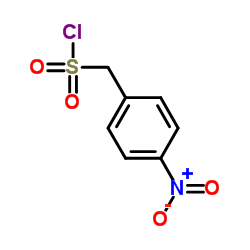
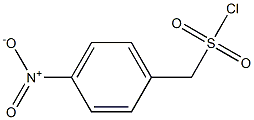
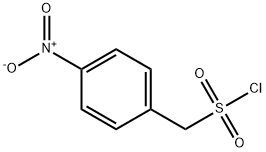
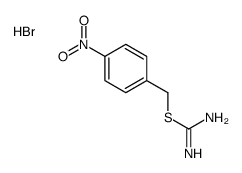
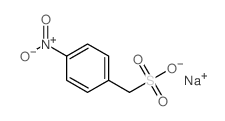
![S-[(4-nitrophenyl)methyl] ethanethioate结构式](/20230522/170640-75-2.png)
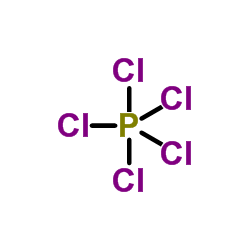
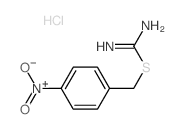
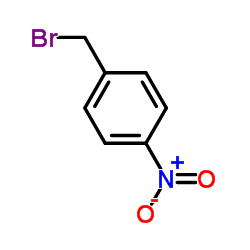
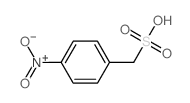
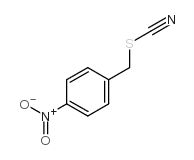
![Disulfide,bis[(4-nitrophenyl)methyl]结构式](/20230522/39549-05-8.png)
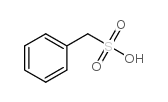
![N-[(4-氨基苯基)-甲基磺酰基]吡咯烷结构式](/20230522/334981-10-1.png)
![N-[(4-硝基苯基)-甲基磺酰基]吡咯烷结构式](/20230522/340041-91-0.png)

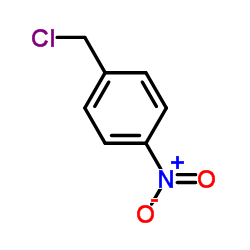
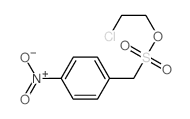
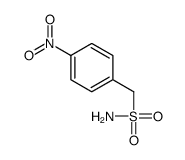
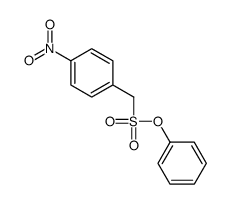





 浙公网安备 33010802013016号
浙公网安备 33010802013016号